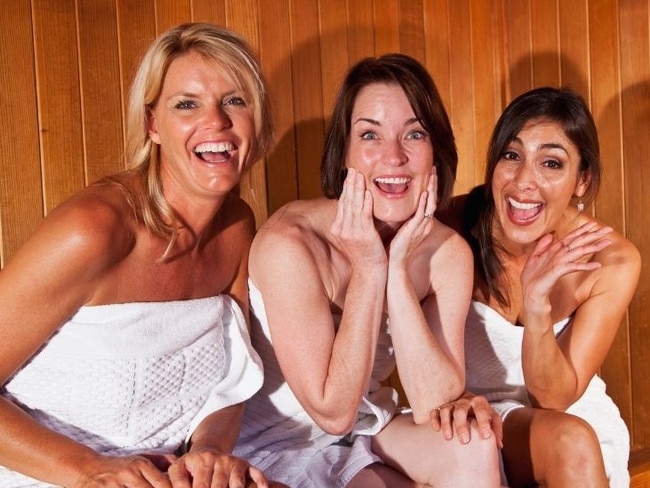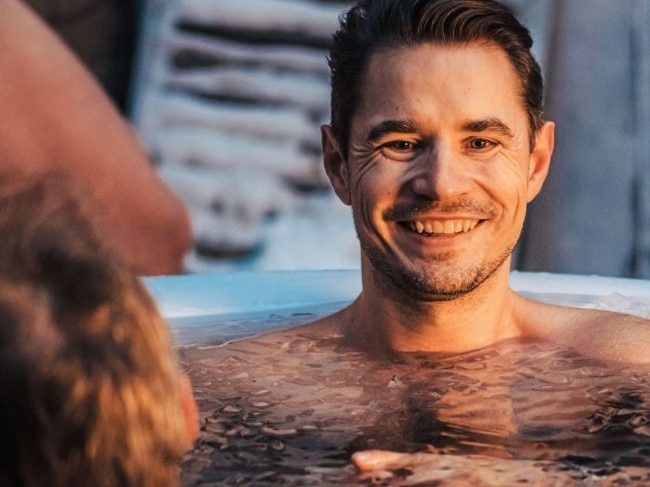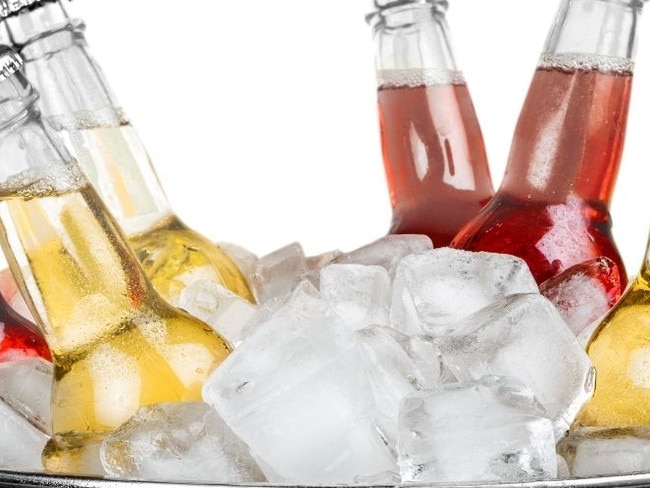Sauna and cold dip? Read this before you take the plunge
‘Contrast therapy’ is booming, but is it good for your health? This is what you need to know.

Wellbeing
Don't miss out on the headlines from Wellbeing. Followed categories will be added to My News.
We’ve all heard that cold water swimming is supposed to be good for us and that regular use of traditional saunas can make us happier and healthier, but the latest trend combines the two extremes.
Contrast therapy, as it is known, entails switching between hot and cold temperatures, jumping from cold water to sauna and back again, and is said to improve circulation, boost mood and promote muscle recovery.
It’s not a new concept: the Romans would have a caldarium (hot steam room) and a frigidarium (cold pool) in their bathhouses, while for decades athletes have used contrast therapy to aid recovery.
However, the practice has recently caught the imagination of the wellness brigade and word has spread about its healing capabilities.
Ben Wright, a lecturer in exercise physiology at Oxford Brookes University who has investigated the trend, says contrast bathing does have benefits. “Most people who try contrast therapy do so to boost general wellness and claim it helps with mood improvement, stress relief and circulation,” he says. “It is relatively safe but there are things you need to know before you try it.” Here’s a guide.
HOW DOES IT WORK?
Dr Mark Harper is a consultant anaesthetist at Sussex University Hospitals and the author of Chill: The Cold Water Swim Cure. He explains that the hot, dry heat of a sauna and the cold temperatures of a plunge pool – often referred to as an ice bath but typically just water cooled to 10-15C – provide moderate amounts of micro-stress that activate the sympathetic nervous system and anti-inflammatory and cardiovascular mechanisms, promoting feelings of relaxation. “They are relatively gentle ways to obtain the kind of moderate stress that will benefit our health,” Harper says.

With cold water immersion, receptors in the skin detect a change in temperature and that initiates a response that temporarily increases breathing rate, raises heart rate and causes the blood vessels to the body’s extremities to narrow, a process known as vasoconstriction. In the heat, the opposite occurs as blood vessels widen – or vasodilate – to improve flow. Alternating between hot and cold exposure thus causes intermittent vasoconstriction and vasodilation, which results in increased blood flow and oxygenation around the body. Both applications are safe provided that temperatures are not too extreme. “A range of 10-15C for a cold plunge and 70-77C for a sauna is ideal for mood, cardiovascular and metabolic benefits,” Wright says.
BOOST BLOOD FLOW AND REDUCE INFLAMMATION
There is plenty of evidence for the benefits of regular sauna use and some for the positive effects of cold water exposure. A review in the journal Experimental Gerontology showed that sauna-bathing helps to repair cell damage and protect against exposure to subsequent stressors. Another paper in the International Journal of Circumpolar Health showed that tension, fatigue and memory problems were significantly reduced in people who practised outdoor winter swimming, the cold water inducing a stress reaction that increases the secretion of catecholamines, hormones that enhance mood. Using both is believed to maximise the healing effect.

“The idea is that because of the repeated widening and constriction of blood vessels, contrast therapy improves healing, boosts blood flow, reduces inflammation and promotes faster recovery from exercise,” Wright says.
AIM FOR A SESSION ONCE OR TWICE A MONTH
“Ideally you will need to contrast bathe once a week or more often for greatest benefit,” Wright says. “Once or twice a month will make you feel better immediately but more often is needed for lasting changes.”
A 2024 study in the International Journal of Circumpolar Health showed that using a sauna one to four times a month resulted in the biggest gains in happiness and health. Hans Hagglund, a researcher at Uppsala University Hospital in Sweden, also discovered that even those who used saunas only once a month were “happier, sleep better, have more energy, and rate their mental and physical health better” than those who didn’t use them at all.

With cold plunges, even a single session can bring positive results. “Just five minutes in water cooled to 19.93C has been shown to improve mood and a single 15-minute cold immersion at 10C can lower cortisol levels, which helps with stress control, as well as reducing self-reported ‘negative feelings’ for up to three hours,” Wright says. In combination, he adds, effects might be more profound for some people.
IT CAN REDUCE MUSCLE SORENESS
A study in the International Journal of Physiology and Performance looked at the effects of contrast bathing on competitive runners. “Just six minutes of 60 seconds hot and 60 seconds cold contrast therapy reduced muscle soreness significantly one and two days after intense exercise,” Wright says. “The researchers found that heat or cold water therapy alone had no effect on recovery.”
DON’T COMBINE CONTRAST BATHING WITH ALCOHOL
Gen Z in particular have swapped hanging out in bars for communal saunas, and contrast bathing spas have a similar social vibe. Often a bar is within reach of the sauna or plunge pool. Does this mean it’s OK to indulge in a glass of fizz? Absolutely not, Wright says: “Alcohol is an absolute no-no before, during or after contrast therapy.”

About half of the deaths in saunas globally are thought to be attributable to alcohol intake as it is a diuretic that promotes dehydration, which is amplified by the heat. And despite the warm glow you might feel after a drink or two, there is evidence that alcohol causes a decrease in core body temperature and increases the risk of hypothermia during cold exposure. “Alcohol also reduces blood pressure, causing dizziness and fainting in vulnerable individuals,” Wright says. “It should be avoided on the days you are taking contrast bathing therapy.”
Originally published as Sauna and cold dip? Read this before you take the plunge


